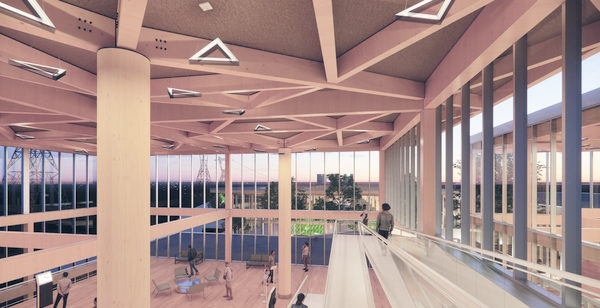In response to the brief, my project aimed to create a sustainable bioenergy production, research and education facility located near to the town of Strabane, Northern Ireland. The scheme intended to provide a solution to the challenges presented by a hard border in a post-Brexit scenario. The disruption to logistics involved for the vast quantities of animal waste produced by the agri-food industry in Northern Ireland presented the opportunity to utilise waste for electricity generation.
Utilising waste for electricity generation through biogas production in an anaerobic digestion plant on one side of the border would provide the facility with its own supply of energy and feed into the national grid for a continuous annual supply of energy to local homes. Design development focused on the second aspect of the scheme which responded to the deprivation of residents in the Derry Strabane county. Building programme provides education facilities, research and visitor space to provide local residents with employment opportunities and interaction with plant operations. Forming a closed-loop circular economy, the use of alternative fuel production was explored in the form of micro-algae growth in tubular photobioreactors to produce biomass and high-yield algal-oil for use in the nearby anaerobic digestion plant, maximising energy output. From concept to realisation, sustainability and the idea of ‘seamless’ operations were the key narrative throughout the project. The building uses modular timber elements for faster construction and lower embodied carbon while the implementation of high-tech environmental and technological systems integrate rainwater harvesting and solar energy generation. The use of intelligent iot systems were adopted into the project for smart building management through data collection and remote monitoring to create efficient, seamless building operations.


